
Overview
This article serves as an authoritative guide for DTC brands aiming to boost their e-commerce conversion rates through five strategic steps. First and foremost, enhancing user experience is paramount. A seamless and intuitive interface not only attracts customers but also encourages them to complete their purchases.
Next, leveraging psychological triggers can significantly influence consumer behavior. By understanding what motivates buyers, brands can craft compelling messages that resonate deeply with their audience. This approach is not just theoretical; numerous studies have shown that emotional connections drive sales.
Utilizing data-driven decisions is another critical step. By analyzing customer behavior and preferences, brands can tailor their strategies to meet the specific needs of their target market. This method ensures that every decision is backed by solid evidence, increasing the likelihood of success.
Conducting A/B testing is essential for refining these strategies. By comparing different approaches, brands can identify what works best and optimize their efforts accordingly. This iterative process is vital for continuous improvement.
Finally, continuously monitoring performance allows brands to stay agile and responsive to market changes. Regular assessments ensure that strategies remain effective and relevant, ultimately driving sales and enhancing customer engagement.
In conclusion, by implementing these five strategic steps:
- Enhancing user experience
- Leveraging psychological triggers
- Utilizing data-driven decisions
- Conducting A/B testing
- Continuously monitoring performance
DTC brands can significantly increase their e-commerce conversion rates. The path to success is clear: take action now to optimize your strategies and watch your sales soar.
Introduction
In the competitive landscape of direct-to-consumer (DTC) brands, the ability to convert site visitors into loyal customers is crucial for success. Mastering Conversion Rate Optimization (CRO) is not just beneficial; it’s essential for brands aiming to elevate their online performance and drive sales. This article outlines five actionable steps that empower DTC brands to enhance their e-commerce conversion rates. These strategies not only improve user experience but also harness data-driven insights. As the digital marketplace continues to evolve, how can brands effectively tackle the challenges of conversion optimization while ensuring sustained growth and customer satisfaction?
Understand Conversion Rate Optimization in E-commerce
Conversion Rate Optimization (CRO) in e-commerce represents a strategic approach designed to elevate the percentage of visitors to an online store who complete desired actions, such as making a purchase. A robust CRO strategy is anchored in several pivotal elements that significantly influence consumer behavior:
-
User Experience (UX): A seamless and intuitive shopping experience is essential. Research indicates that a well-structured website can dramatically reduce abandonment rates and enhance interaction. When navigation is clear and visually appealing, visitors are more likely to linger and explore products.
-
Psychological Triggers: Harnessing principles of consumer psychology, including scarcity and social proof, can greatly impact purchasing decisions. For example, showcasing limited-time offers or customer testimonials fosters urgency and builds trust, motivating visitors to convert.
-
Data-Driven Decisions: Employing analytics tools to scrutinize user behavior is crucial for pinpointing areas that require enhancement. Key metrics to monitor include bounce rates, cart abandonment statistics, and conversion rates. By understanding how visitors interact with the site, brands can implement informed changes that elevate the overall shopping experience.
Focusing on these elements empowers DTC brands to increase e-commerce conversion rates, resulting in increased revenue without incurring additional advertising costs. As the e-commerce landscape continues to evolve, prioritizing user experience will remain a vital component in achieving sustained growth and profitability.
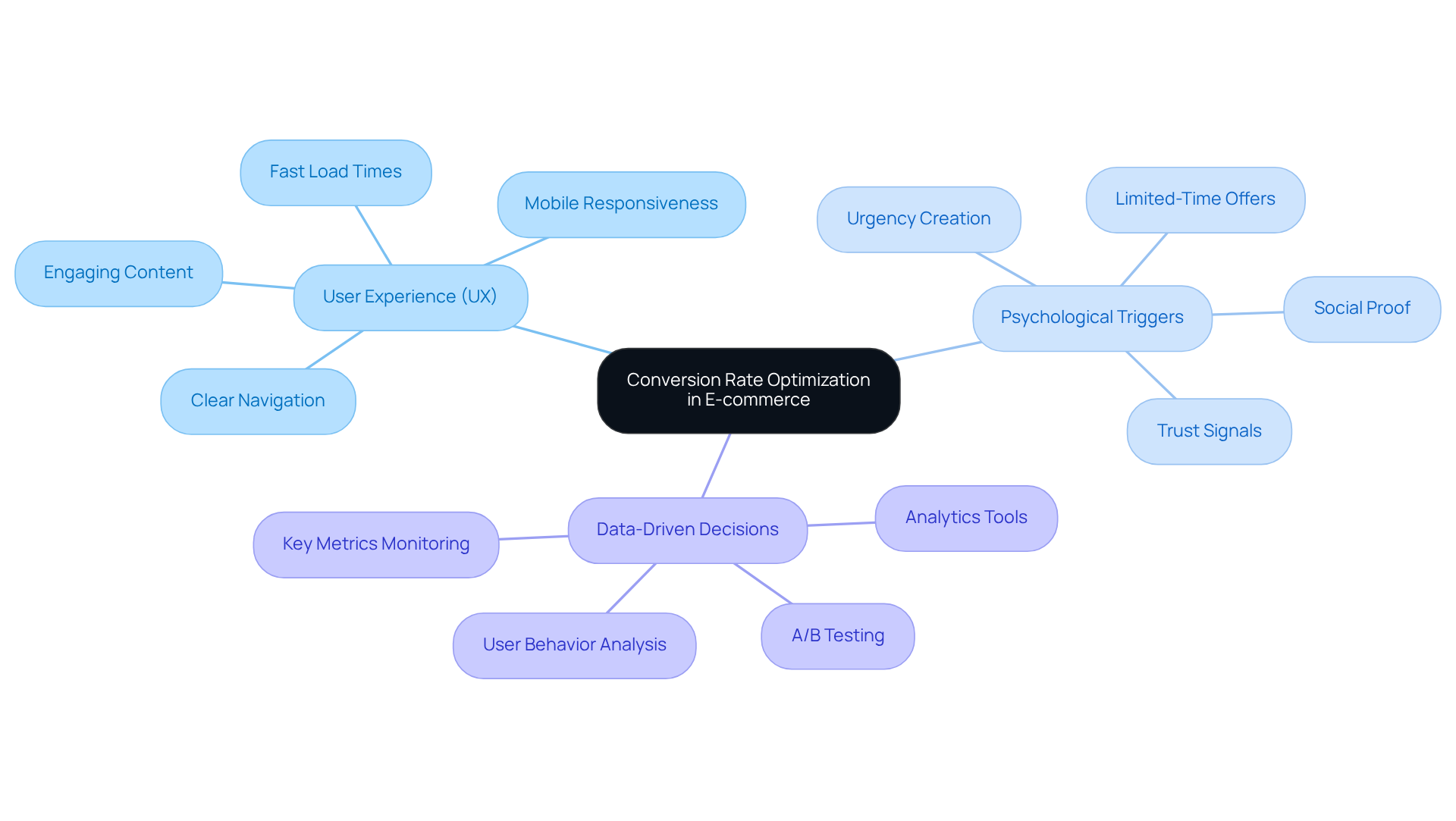
Establish Benchmarks and Analyze Current Performance
To effectively boost success ratios, brands must first set clear standards and evaluate their current performance. Here’s how to do it:
-
Identify Key Performance Indicators (KPIs): Focus on essential metrics such as change rate, average order value (AOV), and customer acquisition cost (CAC). These indicators are vital for understanding how to increase e-commerce conversion rates in your strategies.
-
Use Analytics Tools: Leverage analytics platforms like Google Analytics to gather data on user behavior, traffic sources, and pathways to success. This data is crucial for identifying trends and areas needing improvement to increase e-commerce conversion rates.
-
Benchmark Against Industry Standards: Investigate industry benchmarks for transformation metrics to assess your performance compared to rivals. Typically, the e-commerce success percentage ranges from 2% to 4%, but strategies that aim to increase e-commerce conversion rates can lead to significant variations by sector. For instance, brands utilizing dynamic creative optimization (DCO) have reported success rates that are 121% greater than those employing generic assets, underscoring the impact of customized approaches.
-
Conduct a SWOT Analysis: Evaluate your strengths, weaknesses, opportunities, and threats related to your current performance in changing outcomes. This analysis will help pinpoint specific areas for enhancement, allowing for targeted improvements.
-
Document Findings: Compile a report summarizing your current performance metrics and benchmarks. This documentation will facilitate tracking progress over time and adjusting strategies as necessary to ensure continuous improvement.
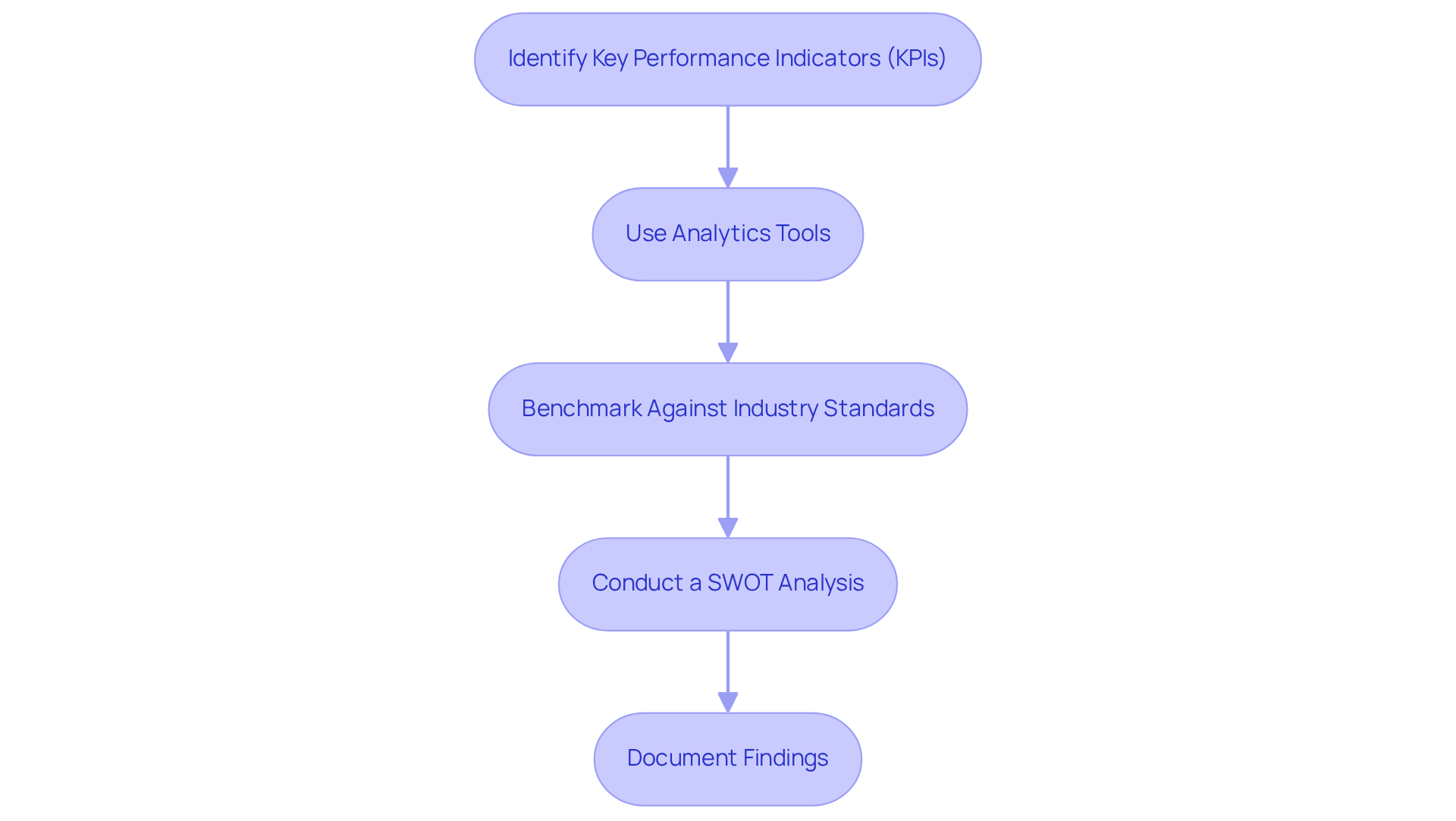
Implement User Experience Enhancements for Higher Engagement
Improving user experience (UX) is essential to increase e-commerce conversion rates and boost sales. At Parah Group, we draw on our extensive expertise in conversion rate optimization (CRO) to implement a range of holistic strategies that drive results:
-
Optimize Website Speed: Fast loading times are non-negotiable; aim for a site that loads in under 3 seconds. Research shows that a one-second delay can lead to a 7% drop in conversions. For e-commerce platforms generating $100,000 daily, that translates to a staggering potential loss of around $2.5 million annually due to just a one-second lag. Clearly, website speed has a direct financial impact on your bottom line.
-
Mobile Responsiveness: With mobile devices accounting for over 50% of web traffic, it’s crucial to ensure your site is fully optimized for mobile users. Responsive designs can yield 11% higher conversion rates, and mobile-friendly sites contribute to strategies that increase e-commerce conversion rates by experiencing a 40% increase in repeat visits. Moreover, mobile users engage 15% more with responsive platforms, underscoring the importance of mobile optimization in our comprehensive CRO strategy.
-
Simplified Navigation: A clear and intuitive navigation structure is vital for helping users find products effortlessly. By effectively utilizing categories and filters, you can significantly enhance the shopping experience, aligning with our commitment to optimizing every aspect of the customer journey for maximum engagement.
-
High-Quality Product Images: Investing in professional images and videos to showcase your products is key. Quality visuals can sway purchasing decisions, as 67% of consumers indicate that product images greatly influence their choices. This strategy is integral to our broader approach of aligning marketing efforts with audience expectations, which ultimately aims to increase e-commerce conversion rates.
-
Clear Calls to Action (CTAs): Prominent and compelling CTAs are essential for guiding users towards actions like 'Add to Cart' or 'Checkout'. Custom CTAs can significantly increase e-commerce conversion rates by boosting visitor engagement by 42% compared to generic ones. This element is critical for maximizing profitability through effective conversion strategies.
-
Trust Signals: Incorporating elements such as customer reviews, security badges, and clear return policies is vital for building trust and alleviating purchase hesitation. Research indicates that 91% of dissatisfied clients who don’t voice their concerns simply stop using a service, highlighting the importance of addressing client issues proactively. By integrating trust signals, you can significantly enhance customer confidence in making purchases, which will help increase e-commerce conversion rates for your DTC brand.
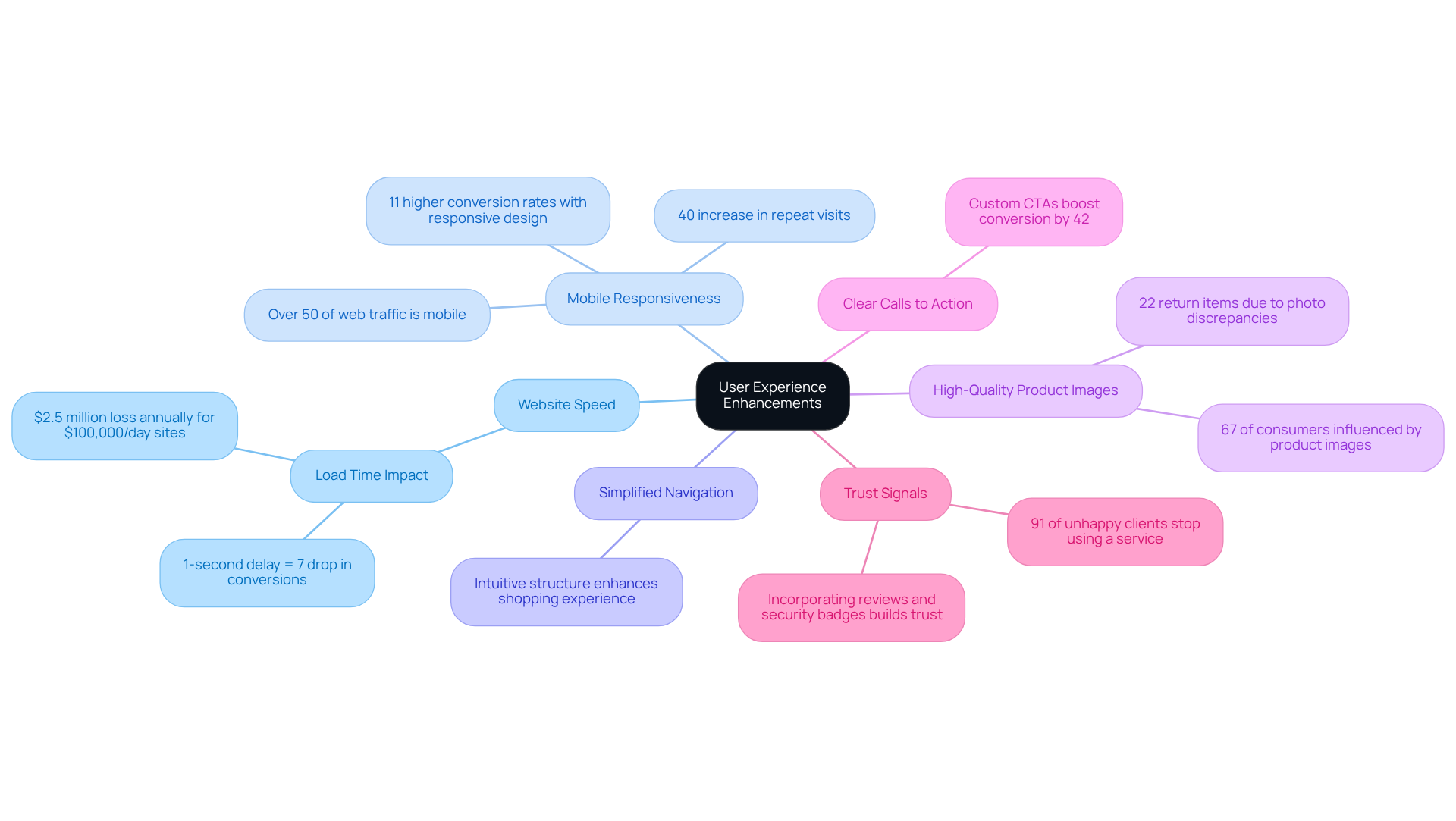
Conduct A/B Testing to Refine Conversion Strategies
A/B testing is essential for optimizing success strategies. Here’s how to implement A/B testing effectively:
-
Define Your Hypothesis: Begin with a precise hypothesis about what you want to test. This could involve changing the color of a CTA button or modifying product descriptions. For instance, a $30M clothing brand boosted its sales by 35% after revamping its homepage based on user feedback and experimentation.
-
Select Variables to Test: Focus on one variable at a time to ensure clear results. This might include layout changes or pricing strategies. In a notable case with Grab Green, testing various free shipping thresholds resulted in an impressive 80% increase in average order value (AOV).
-
Use A/B Testing Tools: Leverage tools like Optimizely or Google Optimize to set up and manage your tests. These platforms are invaluable for tracking the performance of different variations effectively.
-
Examine Outcomes: After running the test for a sufficient duration, analyze the data to determine which version performed better against your success metrics. For example, STRNG Seeds experienced a 90% increase in AOV by implementing targeted upsells and custom landing pages based on A/B testing insights.
-
Implement Winning Variations: Once you identify the winning variation, roll it out across your site and continue testing other elements to further enhance performance. Continuous testing and adaptation, as demonstrated by Parah Group's strategy, can lead to sustainable growth and increased profitability for your brand.
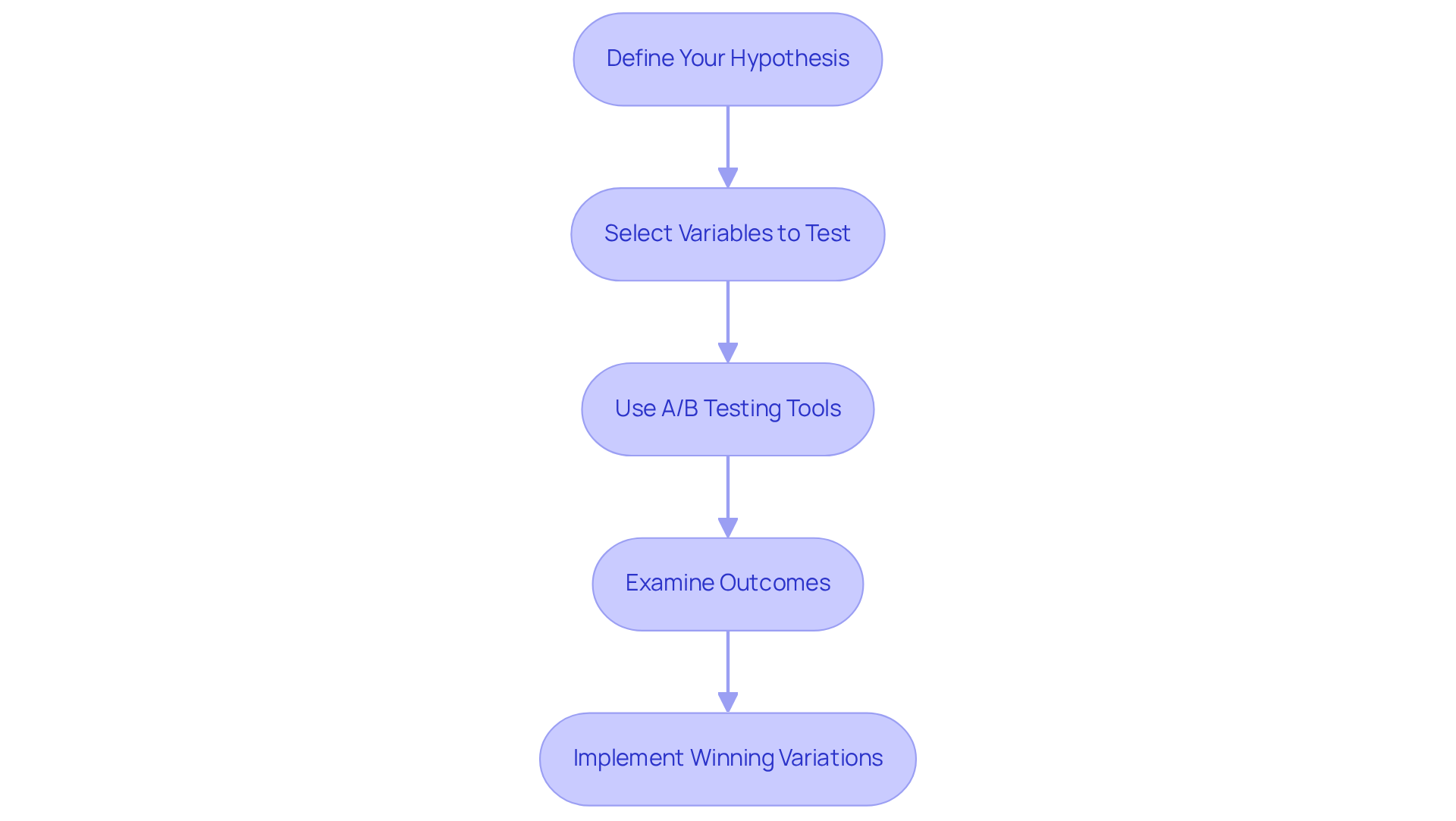
Monitor Results and Adapt Strategies for Continuous Improvement
To ensure sustained success in enhancing performance levels, brands must consistently track outcomes and adapt their strategies. Here’s how:
-
Regularly Review Analytics: Establish a routine for reviewing your analytics dashboard. Focusing on key metrics like conversion rates, bounce rates, and user engagement can help increase e-commerce conversion rates. This data-driven approach helps identify areas for improvement and aligns your paid ads with landing page performance to ultimately increase e-commerce conversion rates.
-
Gather Customer Feedback: Utilize surveys and feedback tools to gain insights directly from customers about their shopping experiences and any obstacles they encountered. Understanding consumer psychology can significantly enhance your strategies to increase e-commerce conversion rates.
-
Stay Informed on Trends: Keep an eye on industry trends and competitor strategies to uncover new optimization opportunities. This comprehensive perspective ensures your plans remain relevant and effective.
-
Iterate Based on Data: Leverage the information gathered to make informed decisions about which strategies to continue, modify, or abandon. High-velocity testing and rigorous growth strategies are essential for maximizing profitability and achieving sustainable growth.
-
Set New Goals: As you meet your initial objectives, establish new benchmarks to pursue, ensuring your optimization efforts align with overall business goals. Continuous improvement is vital for leveraging the full potential of your existing resources.
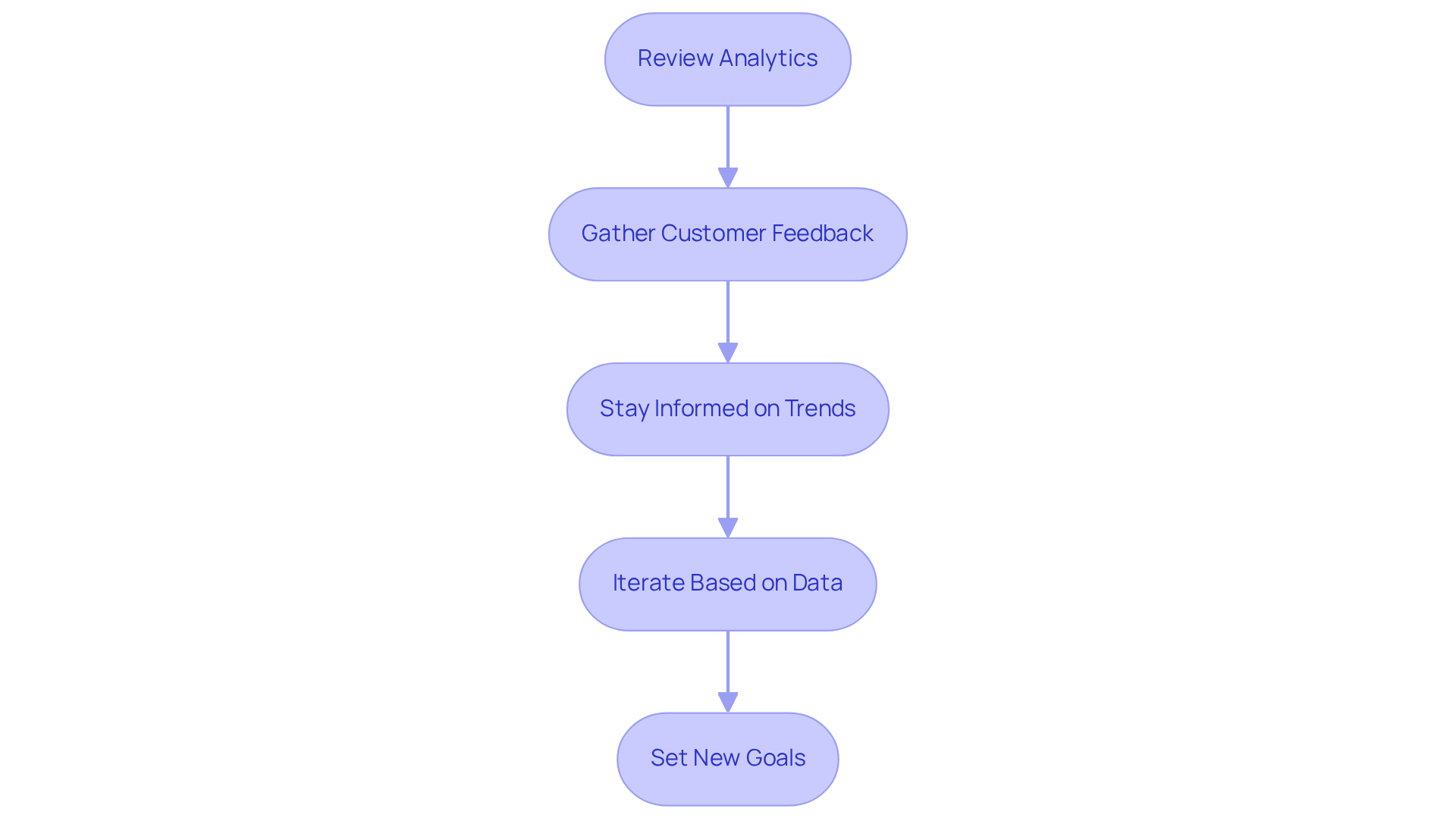
Conclusion
Elevating e-commerce conversion rates is crucial for direct-to-consumer (DTC) brands aiming for growth and profitability. A strategic approach that prioritizes user experience, data-driven insights, and continuous improvement can significantly enhance online performance. It's essential to understand that optimizing conversion rates goes beyond merely attracting visitors; it’s about transforming them into loyal customers through thoughtful design and effective strategies.
Key strategies include:
- Enhancing user experience through website speed optimization
- Mobile responsiveness
- Simplified navigation
- Leveraging psychological triggers
- Implementing A/B testing to refine conversion strategies
- Establishing benchmarks
- Regularly analyzing performance metrics to ensure competitiveness and responsiveness to consumer needs
The journey toward improved e-commerce conversion rates is ongoing. Brands must stay vigilant in monitoring results, gathering customer feedback, and adapting their strategies based on data insights. By prioritizing these practices, DTC brands can unlock their full potential in the ever-evolving e-commerce landscape, driving not just sales but also long-term customer loyalty. Embracing these principles will lead to sustainable growth and a more profitable future.
Frequently Asked Questions
What is Conversion Rate Optimization (CRO) in e-commerce?
Conversion Rate Optimization (CRO) in e-commerce refers to a strategic approach aimed at increasing the percentage of visitors to an online store who complete desired actions, such as making a purchase.
What are the key elements that influence consumer behavior in CRO?
The key elements that influence consumer behavior in CRO include User Experience (UX), Psychological Triggers, and Data-Driven Decisions.
How does User Experience (UX) affect conversion rates?
A seamless and intuitive shopping experience enhances user engagement and reduces abandonment rates. A well-structured website encourages visitors to explore products, ultimately increasing the likelihood of conversions.
What role do Psychological Triggers play in e-commerce conversions?
Psychological Triggers, such as scarcity and social proof, can significantly influence purchasing decisions. Techniques like showcasing limited-time offers or customer testimonials create urgency and build trust, motivating visitors to convert.
Why are data-driven decisions important for CRO?
Data-driven decisions are essential as they allow brands to analyze user behavior and identify areas for improvement. Monitoring key metrics like bounce rates, cart abandonment, and conversion rates helps brands make informed changes to enhance the shopping experience.
What should brands do to establish benchmarks for improving conversion rates?
Brands should identify Key Performance Indicators (KPIs), use analytics tools to gather data, benchmark against industry standards, conduct a SWOT analysis, and document their findings to evaluate and improve their current performance.
What are some essential KPIs for assessing e-commerce performance?
Essential KPIs include change rate, average order value (AOV), and customer acquisition cost (CAC). These metrics help brands understand how to improve their e-commerce conversion rates.
How can brands utilize analytics tools for CRO?
Brands can leverage analytics platforms like Google Analytics to gather insights on user behavior, traffic sources, and successful pathways. This data is crucial for identifying trends and areas needing improvement.
What is the typical e-commerce success percentage, and how can it vary?
The typical e-commerce success percentage ranges from 2% to 4%. However, strategies aimed at increasing conversion rates can lead to significant variations by sector, with customized approaches, such as dynamic creative optimization (DCO), showing much greater success rates.
What is the purpose of conducting a SWOT analysis in the context of CRO?
A SWOT analysis helps brands evaluate their strengths, weaknesses, opportunities, and threats related to their current performance. This assessment allows for targeted improvements to enhance conversion rates.
FAQs











